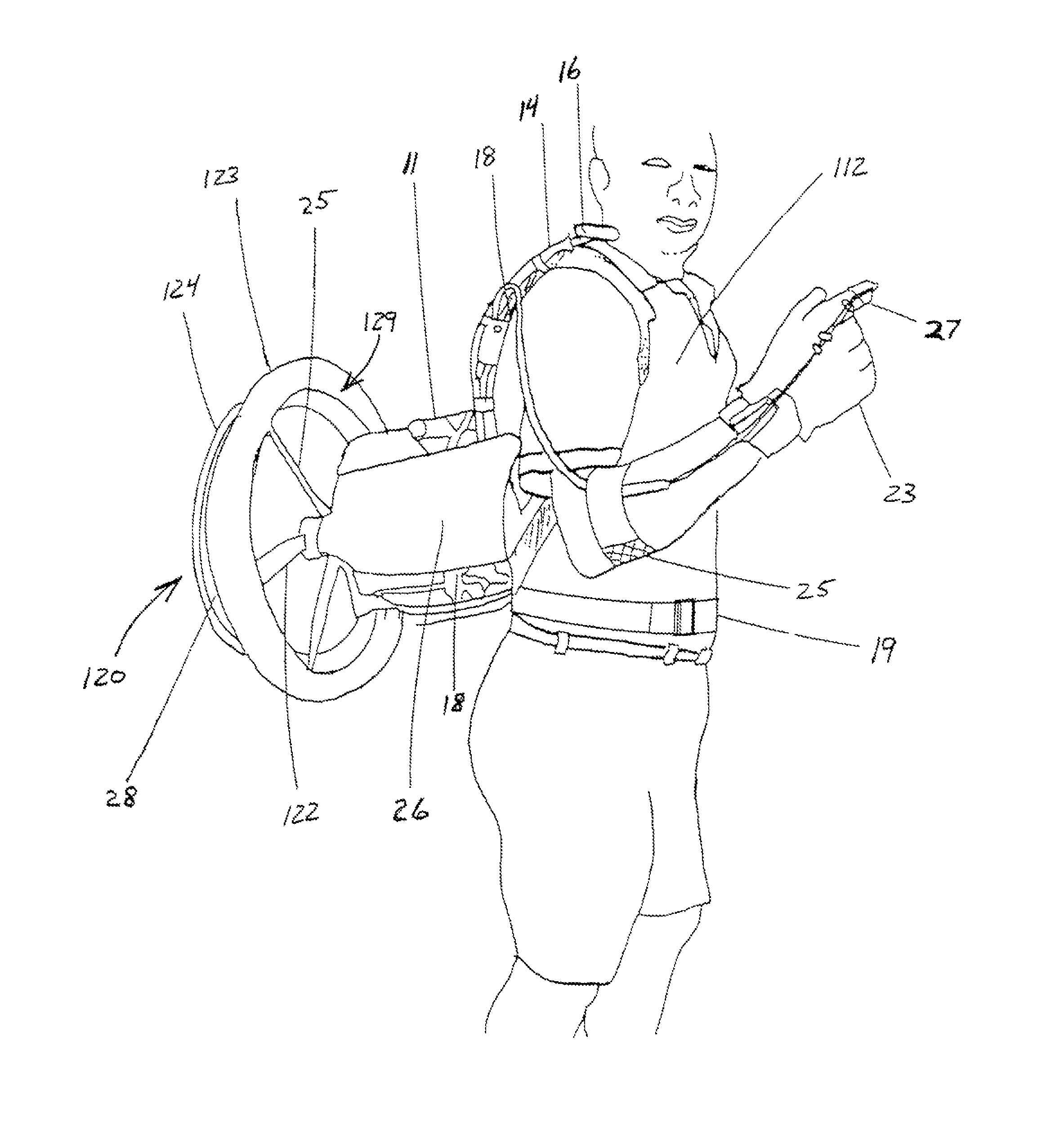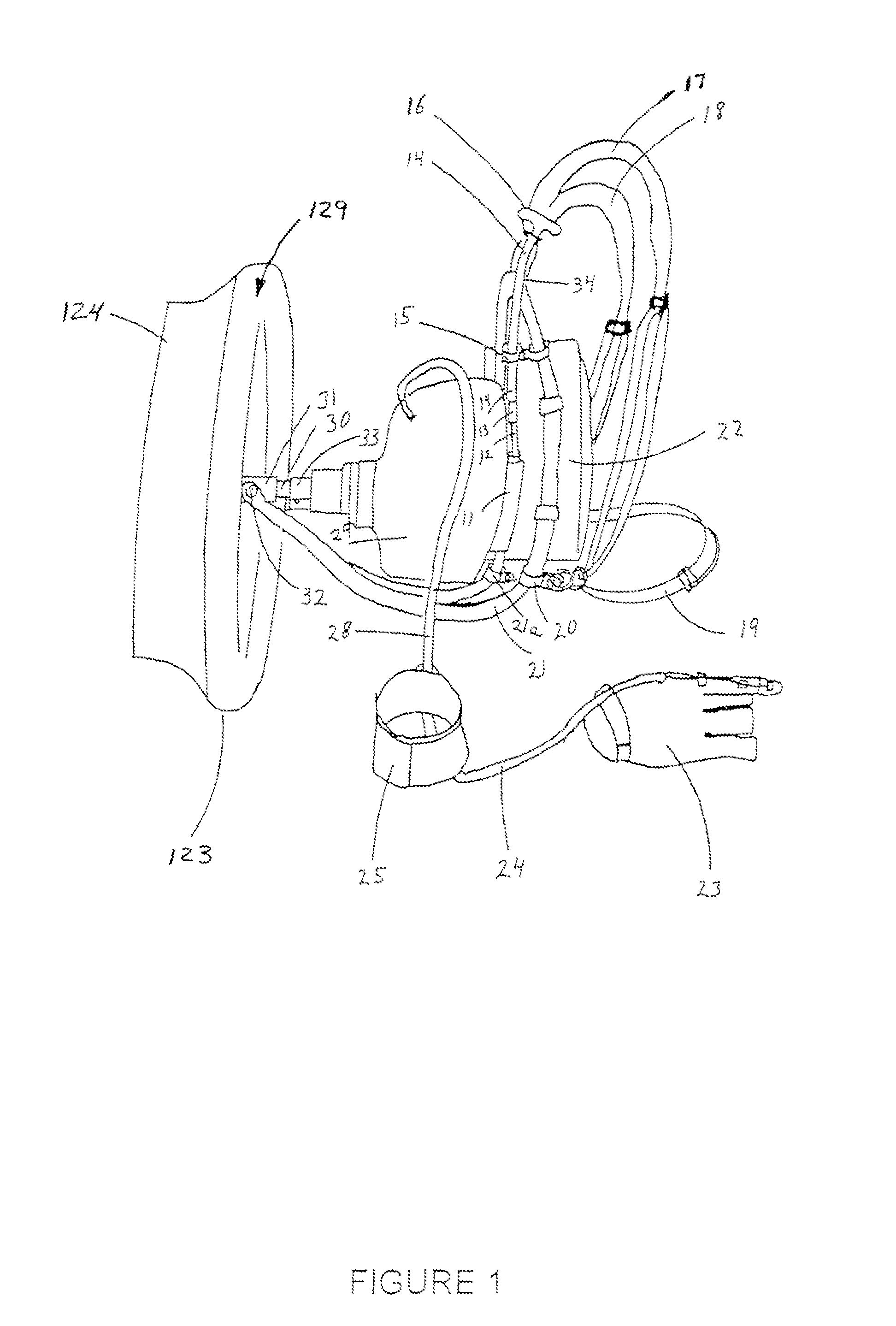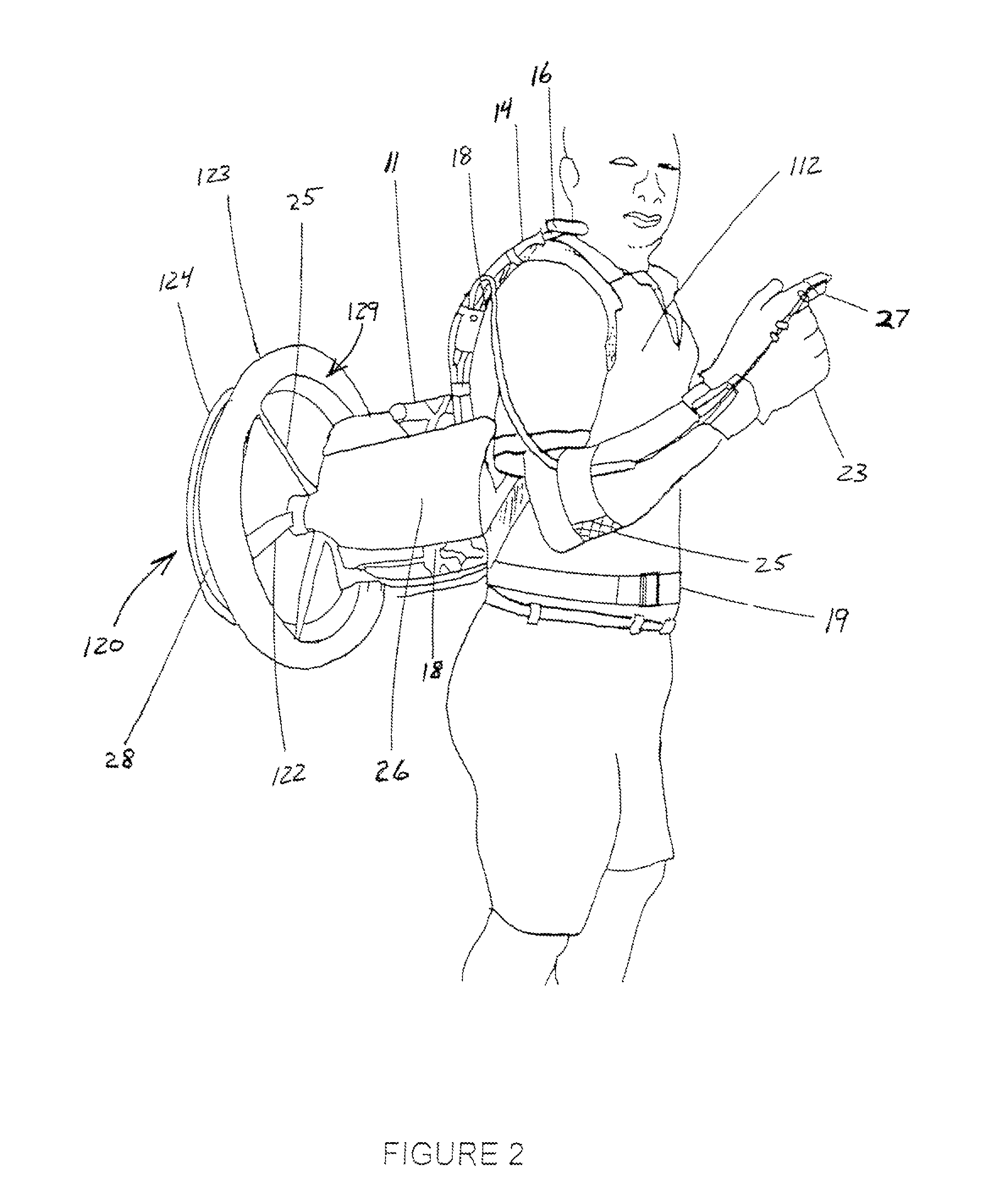Personal propulsion device with hands free control
a propulsion device and hands-free technology, applied in the direction of motorcycles, non-positive displacement fluid engines, liquid fuel engine components, etc., can solve the problems of inconvenient or inconvenient long-distance travel, difficulty in straight line travel and maneuverability, and inability to adjust the center of resistance of the user's skates, so as to reduce the aerodynamic drag of bicycles and riders
- Summary
- Abstract
- Description
- Claims
- Application Information
AI Technical Summary
Benefits of technology
Problems solved by technology
Method used
Image
Examples
Embodiment Construction
[0071]As shown in FIG. 1, in the preferred embodiment of the personal propulsion device 11 of the present invention the motor 29 contains a vibration isolated motor mount clamp 33 and is secured to the propeller shaft housing tube 30. The pivot block 31 slides onto the propeller drive shaft housing tube 30 and is clamped securely by tightening pivot block bolt 32. The pivot block 31 is attached to a light weight aluminum frame 21 with the pivot block bolt 32. As the pivot block bolt 32 is tightened it secures other parts, shown in detail in FIG. 11, simultaneously. A comfort pad 22 is secured to frame 21 and padded adjustable shoulder straps 17 and 18 are attached to the top of the frame 21 and secured to bottom of frame 21 with clamps 20 and 20a. The adjustable waist belt 19 is also attached to clamps 20 and 20a. The throttle control glove 23, which is shown in detail in FIG. 3, is connected to the motor 29 using a standard throttle cable 24 and ignition switch in general use today...
PUM
| Property | Measurement | Unit |
|---|---|---|
| diameter | aaaaa | aaaaa |
| diameter | aaaaa | aaaaa |
| diameter | aaaaa | aaaaa |
Abstract
Description
Claims
Application Information
 Login to View More
Login to View More - R&D
- Intellectual Property
- Life Sciences
- Materials
- Tech Scout
- Unparalleled Data Quality
- Higher Quality Content
- 60% Fewer Hallucinations
Browse by: Latest US Patents, China's latest patents, Technical Efficacy Thesaurus, Application Domain, Technology Topic, Popular Technical Reports.
© 2025 PatSnap. All rights reserved.Legal|Privacy policy|Modern Slavery Act Transparency Statement|Sitemap|About US| Contact US: help@patsnap.com



